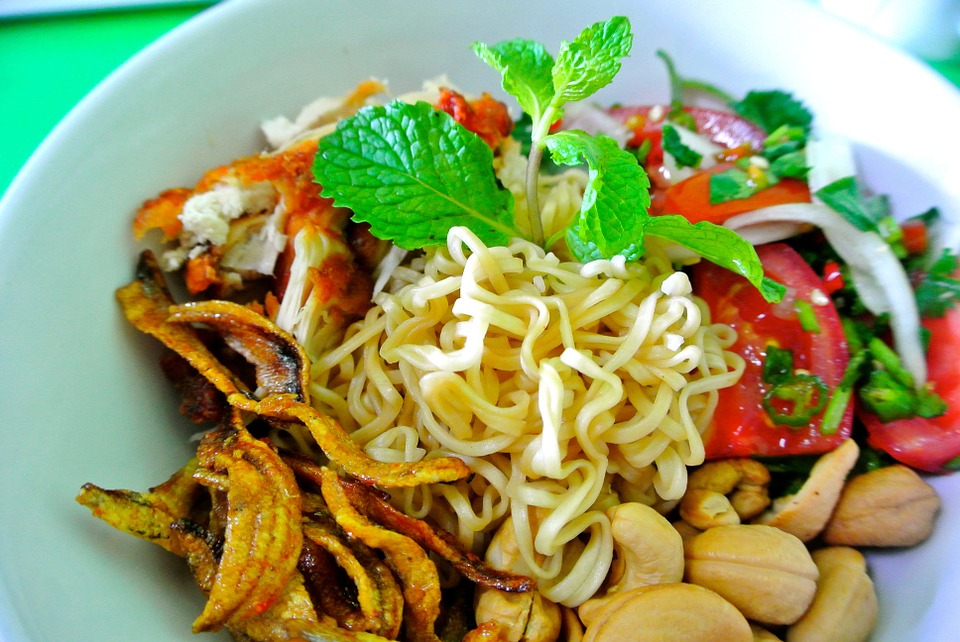Food, Historical
A Summer Noodle Salad – in Search of Sunnier Climbs
A lovely simple recipe courtesy of Clearspring – purveyors, and suppliers to The Hopsack, of authentic Japanese cuisine.
Chu-ka Udon Salad

This colourful salad is a Clearspring alternative to a classic Japanese summer dish served from June to September. “Chu-ka” is in reference to the Chinese origins of ramen noodles, which are normally served with this dressing. Serves 4 Ingredients For dressing 60ml Clearspring Soya Sauce 60ml Clearspring Brown Rice Vinegar 60ml Clearspring Mikawa Mirin 1 tbsp Clearspring Toasted Sesame Oil 2 tbsp Fresh Lemon Juice 1/2 tsp Freshly Grated Ginger Dash of hot chilli oil (optional) For salad 4 tbsp dried Clearspring Instant Wakame Flakes 300g firm tofu 3 tbsp Clearspring Sunflower Frying Oil 1/2 cucumber 2 carrots 2 tbsp Clearspring Sushi Ginger 250g Clearspring Udon Noodles For garnish Sesame seeds Method 1. Cut the vegetables, pickled ginger and tofu into fine strips. Put the instant wakame flakes in a bowl of cold water. 2. Cook the noodles as per instructions below. Once cooked, cool them down by rinsing under cold water. 3. Heat the sunflower oil in a pan and fry the tofu strips for 5 minutes, then turn them over when they are golden-brown in colour. 4. Prepare the dressing by mixing all the liquids and adding the freshly grated ginger. 5. Serve the dish with a handful of cold noodles, covered with the 4 toppings arranged in neat strips. Pour some dressing over. Finish off the presentation with some sushi ginger on top and sesame seeds. Cooking Japanese Noodles Since most Japanese noodles are made with salt, you donât need to add salt to the cooking water. You need about 2.5 litres boiling water for every 250 grams of noodles. Add the noodles a few at a time so the water doesnât stop boiling. Stir gently until the water is boiling rapidly again to prevent the noodles from sticking to the bottom of the pan. If too many noodles are added at once, the water wonât return to the boil quickly enough, and the noodles will overcook on the outside and undercook on the inside. Also, using too little water will result in sticky, unevenly cooked noodles. Some Japanese cooks boil them as described above, but add a cup of cold water once the water comes to the boil. When the water returns to a boil again, another cup of cold water is added. This is repeated three or four times until the noodles are cooked. Either way, you need to test the noodles frequently to make sure they donât overcook. A properly cooked noodle is slightly chewy and the same colour throughout. Once cooked, immediately drain and rinse the noodles in two or three changes of cold water or under cold running water. This stops them cooking any further and keeps the noodles from sticking together. If necessary, reheat by putting them in a colander and submerging them in a pot of boiling water until just heated. Drain well and serve.




